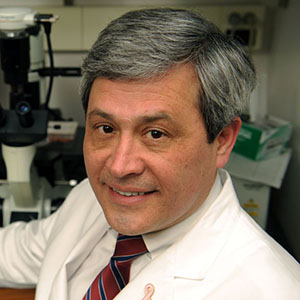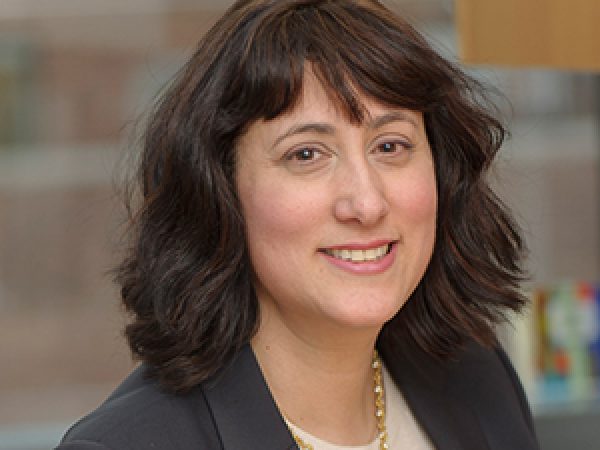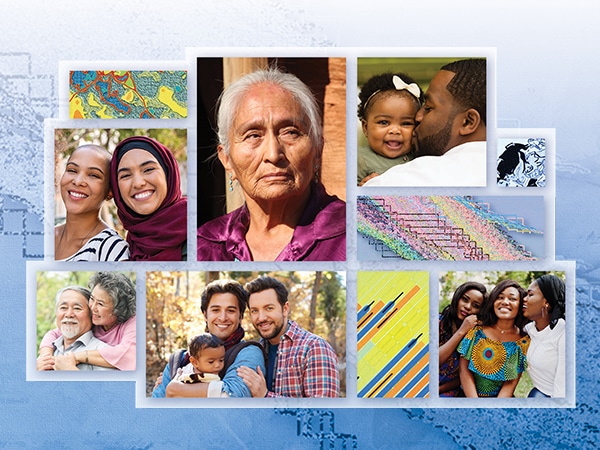San Antonio Breast Cancer Symposium: What’s New This Year?
Tomorrow marks the start of this year’s San Antonio Breast Cancer Symposium (SABCS), a unique and comprehensive scientific meeting that encompasses the full spectrum of breast cancer research. The symposium, which takes place every December, is a partnership between the Cancer Therapy & Research Center at the University of Texas Health Science Center at San Antonio, the American Association for Cancer Research, and Baylor College of Medicine. This week, thousands of experts from around the world will convene to discuss the latest advances against the most commonly diagnosed cancer in women worldwide, facilitating the rapid translation of new knowledge into better care for patients.
We asked symposium co-chair and AACR President Carlos L. Arteaga, MD, director of the Center for Targeted Therapies and the breast cancer program at the Vanderbilt-Ingram Cancer Center of Vanderbilt University in Nashville, Tennessee, to share his views on some of the important studies to be discussed this year at the symposium, and his expert opinion on what the future holds for breast cancer patients.
What is special about the San Antonio Breast Cancer Symposium?
This is the most important breast cancer meeting of the year. The symposium covers everything from basic science to translational research to clinical trials and standards of care in breast cancer. It is attended by members of the breast cancer family from all over the world every year.
There is something for everybody at this symposium, and I think everybody will be talking about progress and challenges in breast cancer management when the meeting ends.
What do you think are the two or three most important trends in breast cancer research today?
There are probably more than three trends, but I will highlight a few. I think personalization of therapy based on the molecular analysis of cancers is revolutionizing the field of breast cancer. Another important trend is the recognition of the importance of, and approaches for, prevention of breast cancer. The third is the use of neoadjuvant therapy, that is, systemic treatment before a patient is subjected to removal of the cancer by surgery.
Can you preview some of the important clinical studies that will be discussed this year?
The SOFT trial, which is basically investigating the role of ovarian suppression in the treatment of estrogen receptor (ER)-positive cancer in premenopausal women, will be a very important study to learn from. Another trial called FERGI will tell us whether adding the PI3-kinase inhibitor pictilisib to the estrogen receptor antagonist fulvestrant in patients with ER-positive breast cancer will improve on the effect of endocrine therapy. Given that resistance to endocrine therapies is a common setback encountered in treating hormone-related breast cancers, a positive outcome from this study would suggest a new option in this setting.
A randomized study, the TNT trial, will tell us whether carboplatin, a DNA damaging agent, is better than the more widely used chemotherapeutic agent docetaxel in patients with advanced triple-negative or BRCA1/BRCA2 mutation-associated breast cancers. And another interesting trial is the IBIS-1 study, which is a prevention study with tamoxifen. In this study, women at increased risk for breast cancer received the selective estrogen receptor modulator tamoxifen for five years. After following these women for a median of 16 years, the investigators will update us on the side effects and benefits of intervention with tamoxifen and the implications for the prevention of breast cancer.

Thousands of experts from around the world will convene in San Antonio, Texas this week to discuss the latest advances against breast cancer.
What is your opinion about some of the early-phase immunotherapy trials?
The data with these early trials are promising, but there are some challenges. We still don’t know whom to treat. As we make progress in identifying breast cancer patients who are going to benefit from immunotherapy, we will have an entirely new type of treatment approach added to the armamentarium of breast cancer therapies.
What are some of the basic research studies that caught your eye?
There is one presentation where biomarkers of response to immunotherapies are linked to breast cancers with measurable genomic alterations in a specific cell signaling pathway, which are present predominantly in triple-negative breast cancers. This study suggests there are a group of tumors with identifiable gene alterations that would be more susceptible to immunotherapies currently in development.
When this symposium is over, what do you think attendees will be talking about most?
It depends on the attendee. Some colleagues come to listen to clinical research, some come to listen to the new standard-of-care recommendations, some come to learn about the latest advancements in basic science, and others to learn about studies in more than one of these areas. There is something for everybody at this symposium, and I think everybody will be talking about progress and challenges in breast cancer management when the meeting ends.
What would you like to say to breast cancer patients, caregivers, and advocates?
I would like to welcome them to the meeting, and I would like to tell them we look forward to their participation in the meeting and their feedback. Their feedback is very important to us. I would also like to convey that we are proud of the progress we are making in breast cancer. However, there are still way too many patients dying from this disease, so we take the opportunity of this meeting to reaffirm our commitment to continue to work tirelessly to find ways and discover approaches that would prolong the lives of, if not cure, many more patients than we do now.
You have been attending this symposium for many years. How do you think it has changed over time?
In my opinion, the breadth and quality of translational research studies presented at the symposium has been getting better in the last few years.
The meeting has been consistently excellent, and it has grown larger in terms of what it has to offer. In my opinion, the breadth and quality of translational research studies presented at the symposium has been getting better in the last few years. There has been an increase in participation by basic/translational scientists and AACR members, which has played a vital role in making this meeting stronger.
Where do you think the breast cancer field is heading today?
We are heading for progress. I think the big trend is the personalization of breast cancer care in conjunction with more molecular analysis of tumors. That’s going to increase as we develop more drugs that are targeted to molecular alterations that we can measure. So I think that is a big trend, a big direction that is going to get stronger in the years to come.
In some institutions, each patient’s tumor is genetically profiled. Do you think that is a worthwhile endeavor, and is that going to play a role in treatment going forward?
Do I think that obtaining genetic information about what drives the progression of breast cancers, which ultimately may affect patient survival, is worthwhile? Of course I do. The other option is not to look, which would be a return to the Dark Ages. I am not sure patients would want that or tolerate such complacency from us.
The power of molecular biology and clinical research, together, should not be underestimated.
However, we should recognize that, at this point, in many cases the molecular profiles we obtain are not immediately actionable. For many situations, we still don’t have a drug or combination that would target the molecular alteration(s) we find. But I think eventually we will get there. The power of molecular biology and clinical research, together, should not be underestimated. The more we find out about the enemy that is cancer, the better. If we don’t understand the enemy, we’ll never be able to make progress. So, I am very optimistic of the future on this front.




